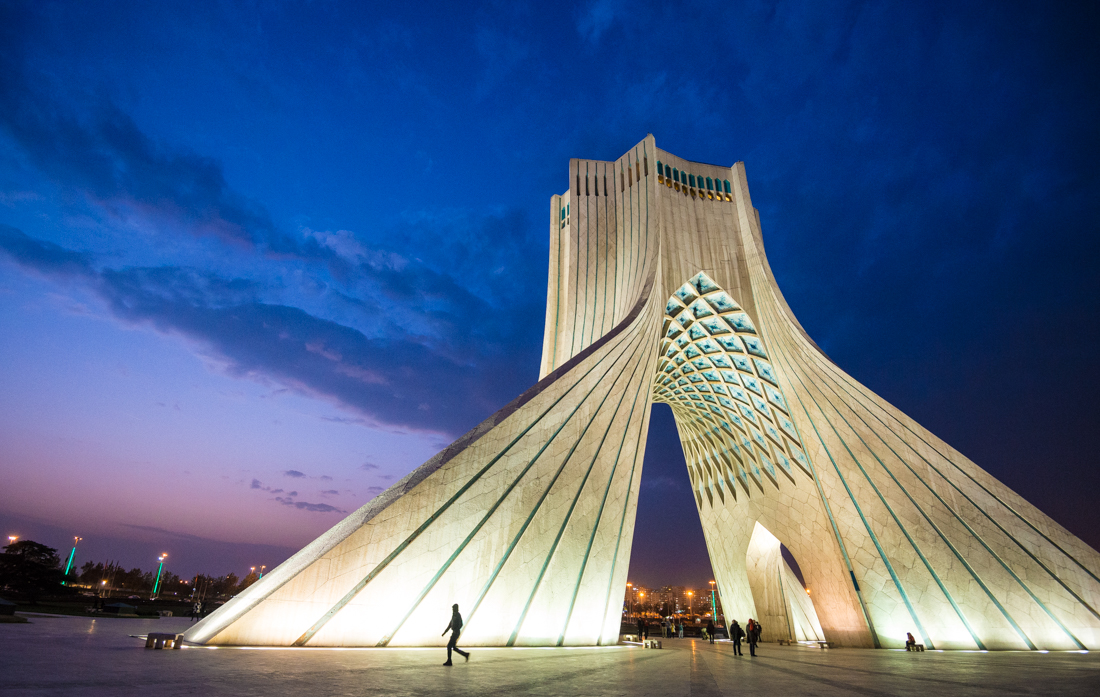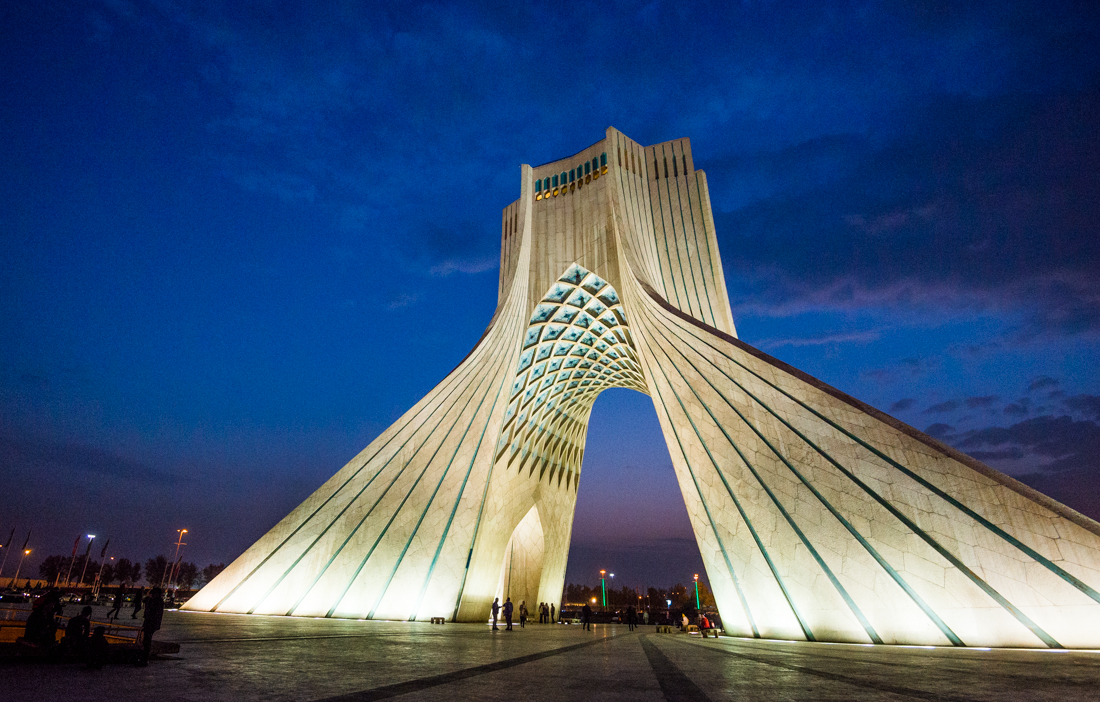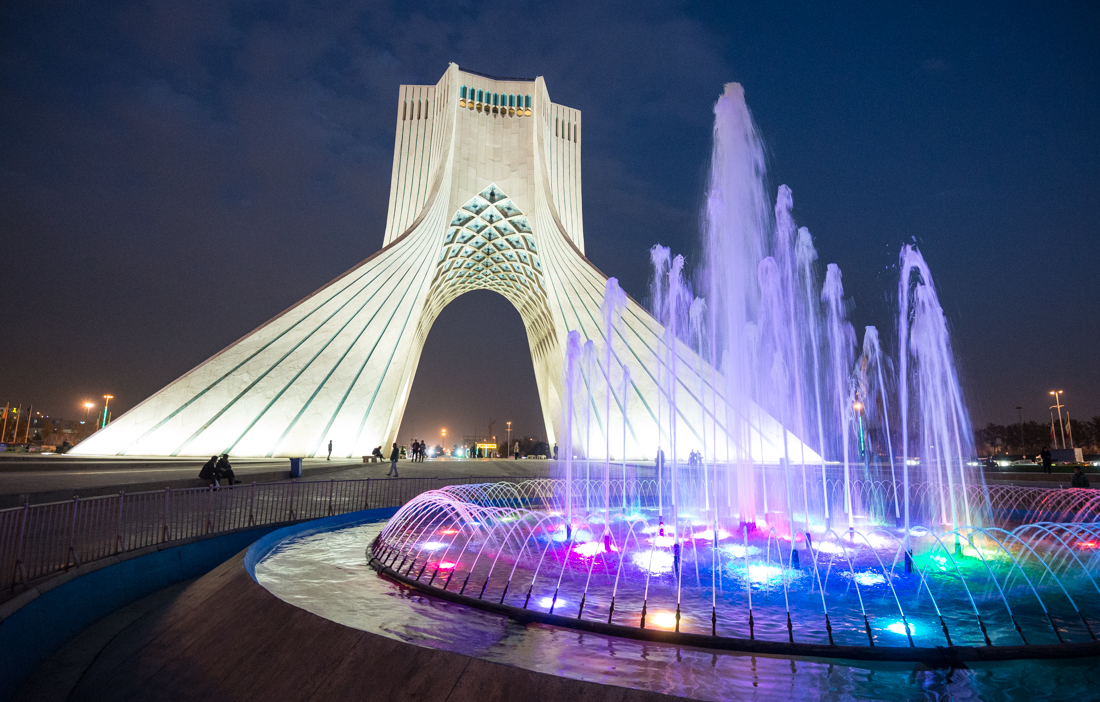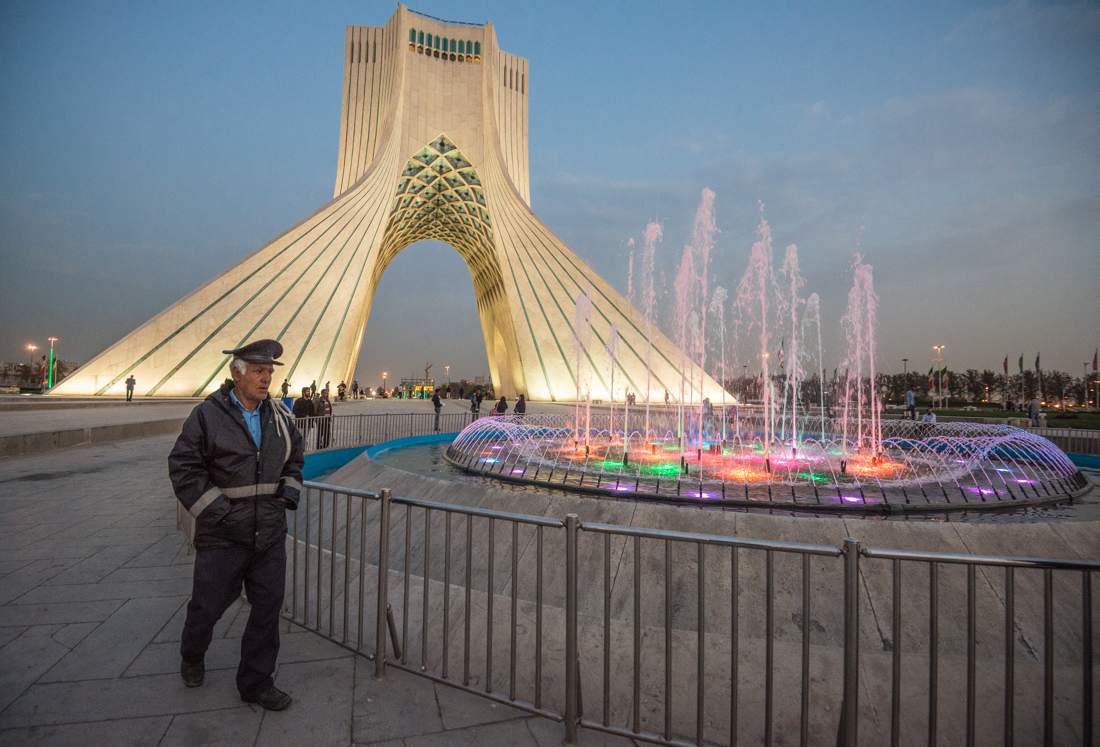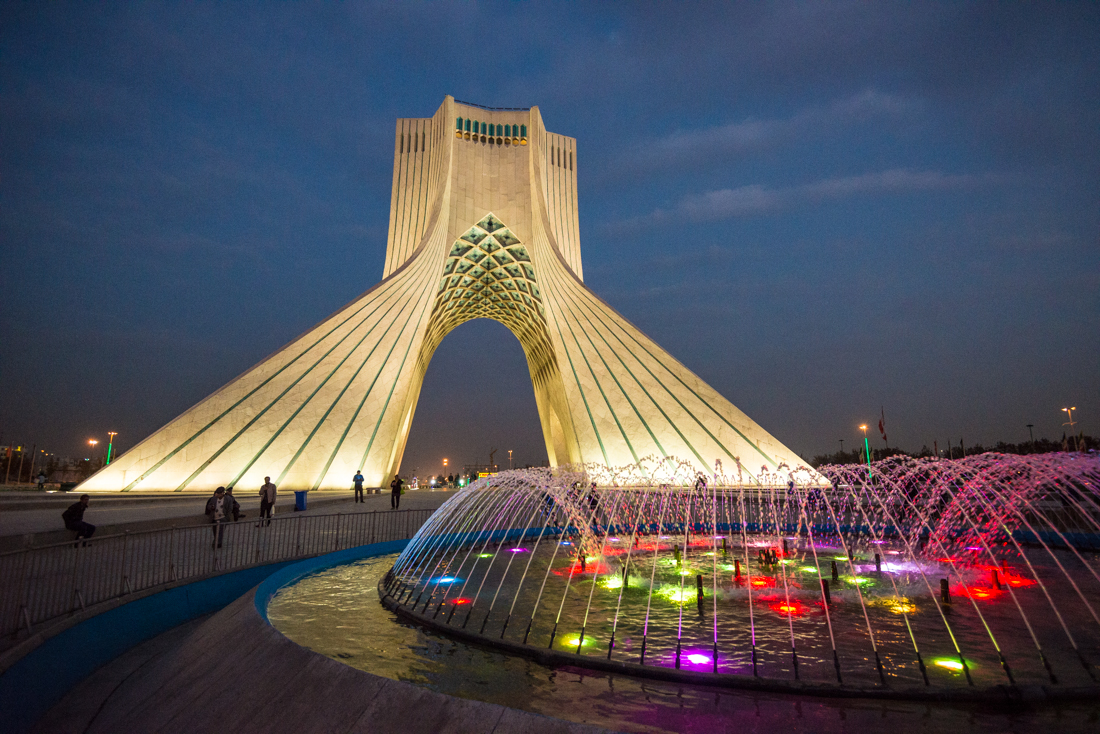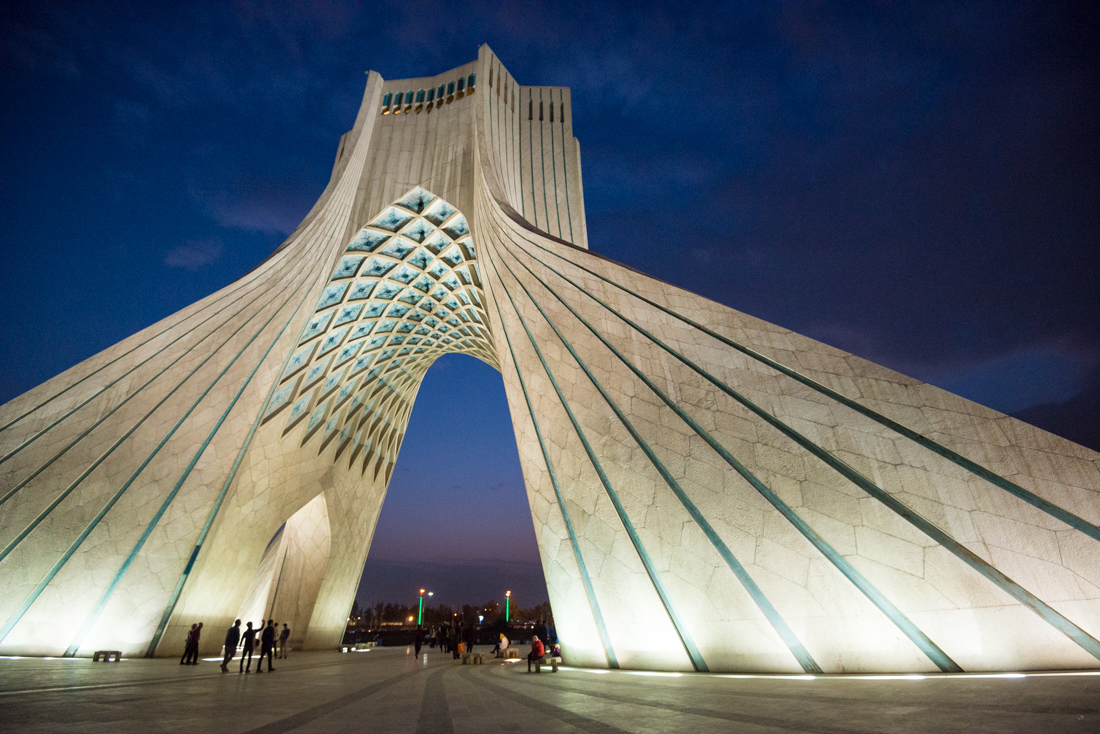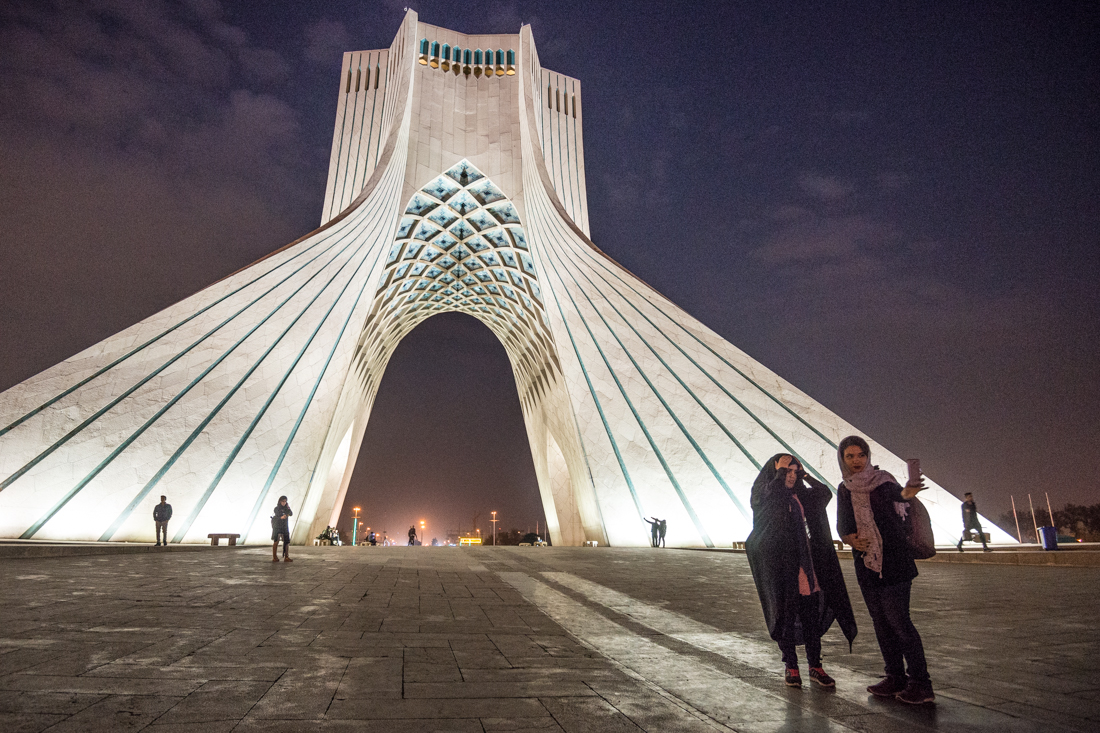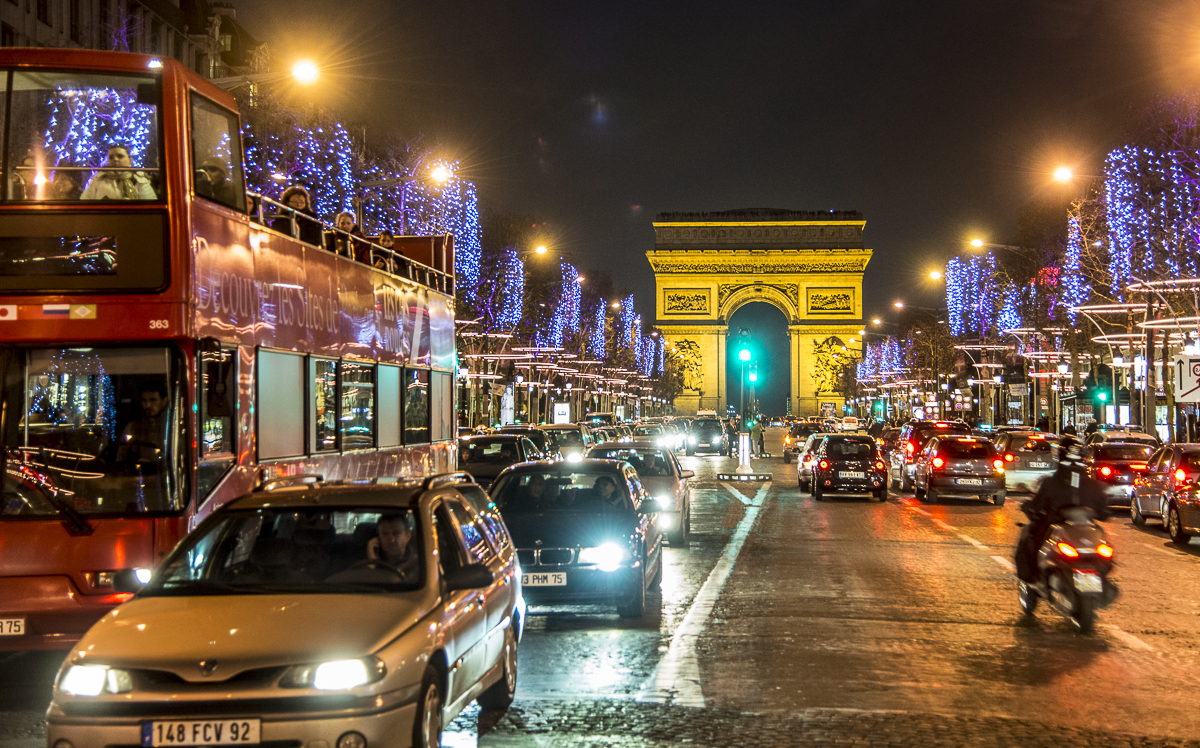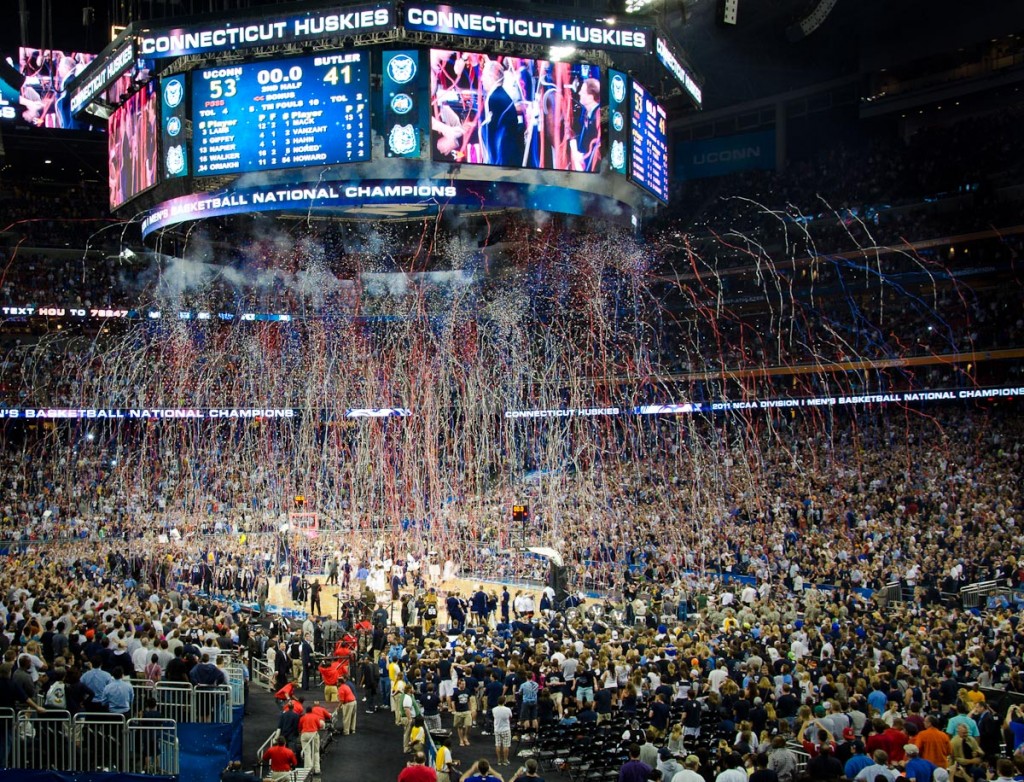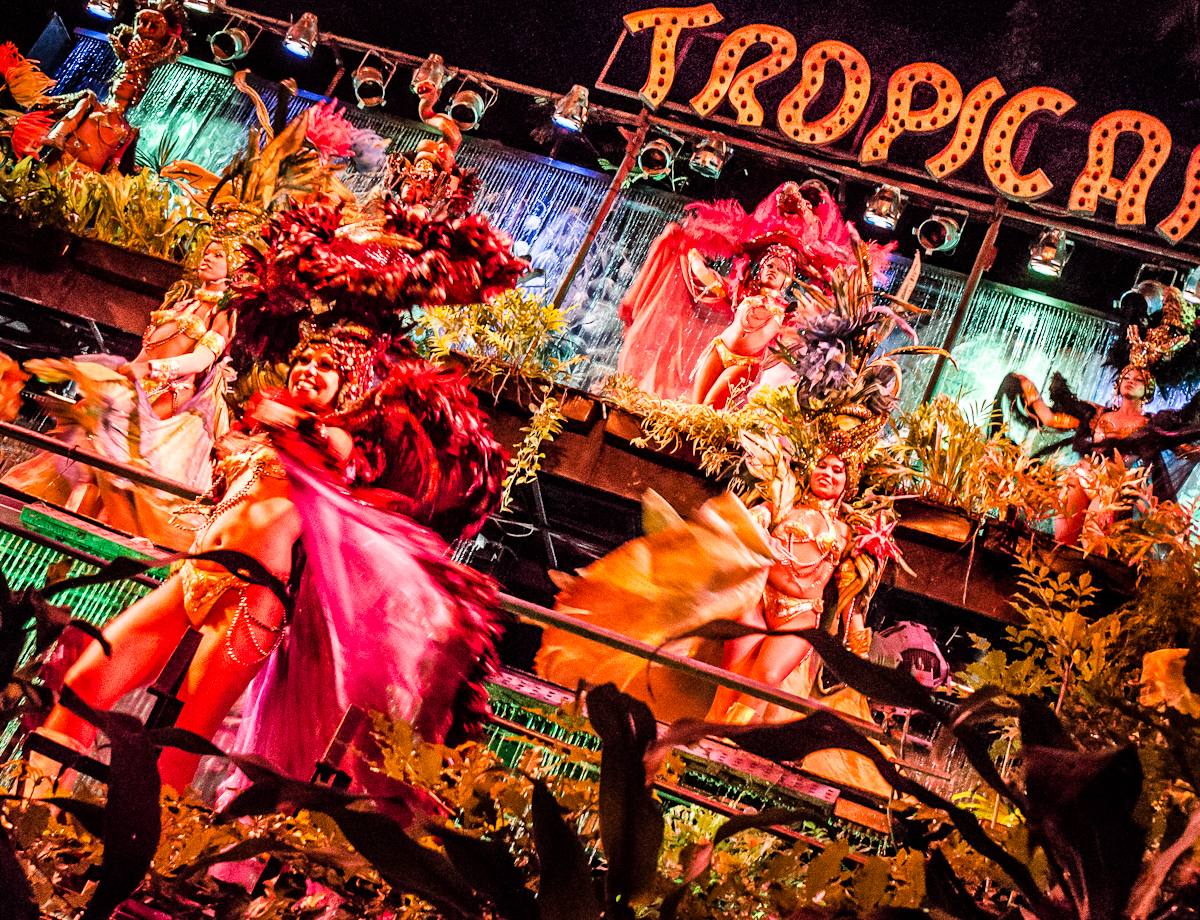It was originally called Shahyad Tower — built in honor of the kingly “shahs” of Iran. So now, since the Islamic Revolution that ousted the last Shah, it’s been renamed Azadi — “Freedom” — Tower. Built in the 1970s, it doesn’ t have a lot of history, but its design is pretty spectacular. Notice the blue tile rib vaults underneath the arch — a colorful nod to Persian architecture from earlier eras.
Here’s a photo lesson for big outdoor monuments or buildings that have a little lighting on them. There’s a point in time — about 20 or 30 minutes after sunset just before it really gets dark, when the sky turns a deep blue. There’ll be a magic few moments when the light in the sky balances just right with the light on the structure.
Sunset this night was at 5:06. I put the exact times for each photo in the captions, so you can see how the sky progressed. The prime time only lasts about 10 minutes, so it’s wise to arrive early and scout out your best locations and angles, then rush back to them to get the images you want when the light is perfect. The exact timing and exposures depend on the brightness of the lights shining on your foreground structure, and on whether you’re facing the west (the setting sun) or not. Shutter speeds will probably be rather slow, so remember to (a) get a firm footing, (b) brace your elbows against your body, and (c) hold the camera very still, and (d) take several shots in a row to give you a better chance of having one good, clear one. One caveat: If you’re hoping for someone or something interesting to wander through your frame, you’ll just need to get lucky because the window is short.
A warning: After a pretty sunset and before this magic moment, there’ll be 20 minutes or so that are “blah” and gray. Don’t give up. Be patient.
At this magic moment, everyone can be a master photographer. Mediocre locations turn lovely, and already lovely places turn stunning. Examples are here and here and here and here.
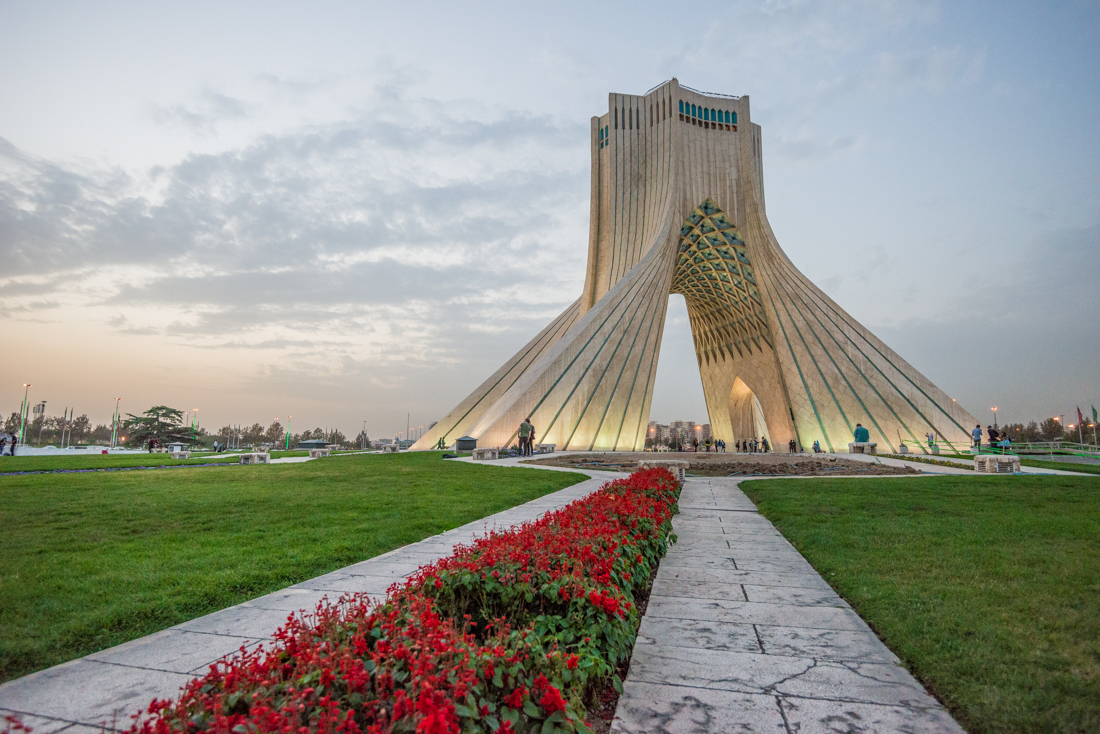
5:12 p.m. — about six minutes after sunset. Notice that the monument is still mostly darker than the sky.
(There’s a similar opportunity about 30 minutes before sunrise, of course. It often requires a little more dedication to be up and in position for that one, if it’s possible at all. For better or worse, there probably won’t be many other people around.)
